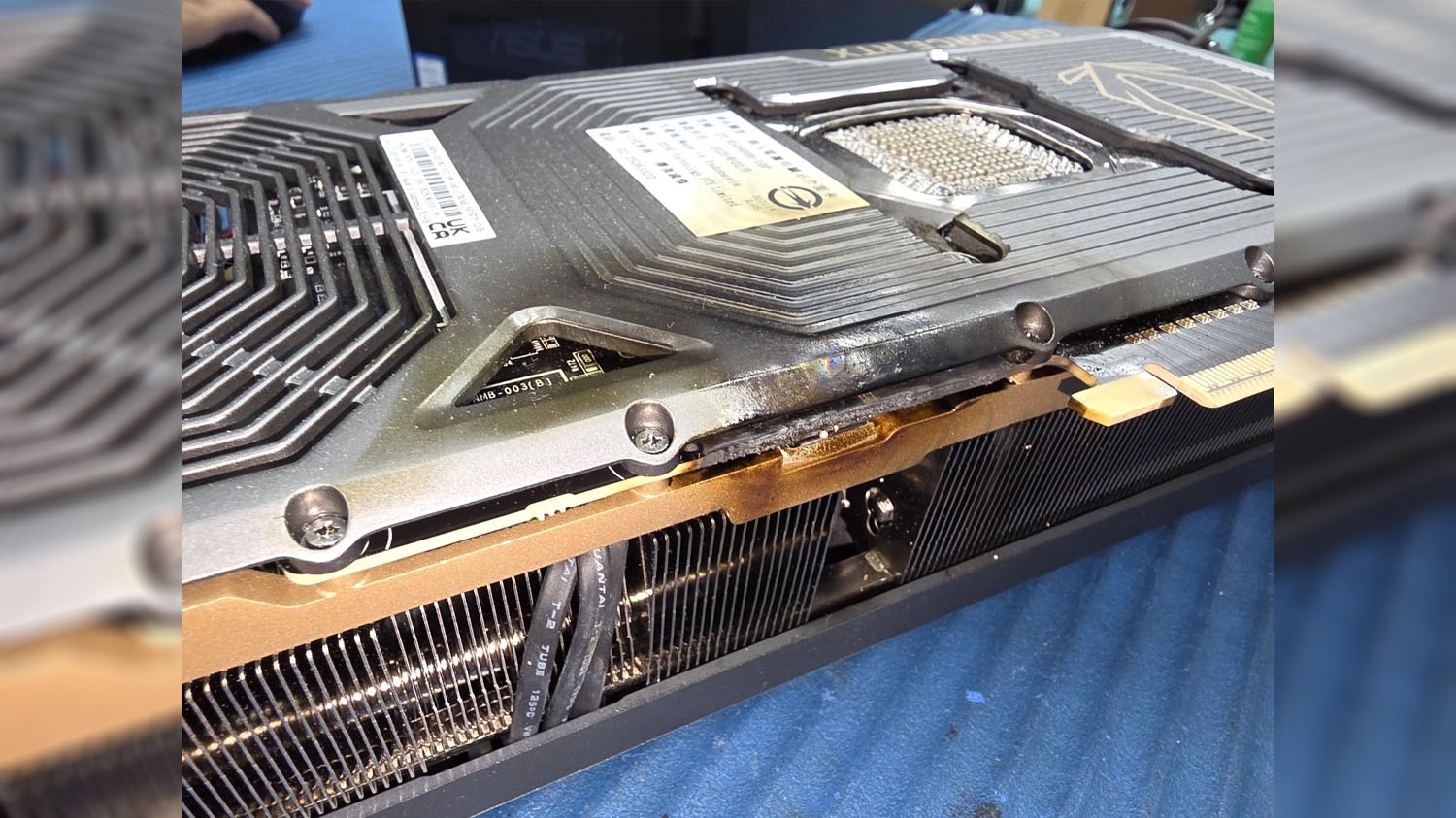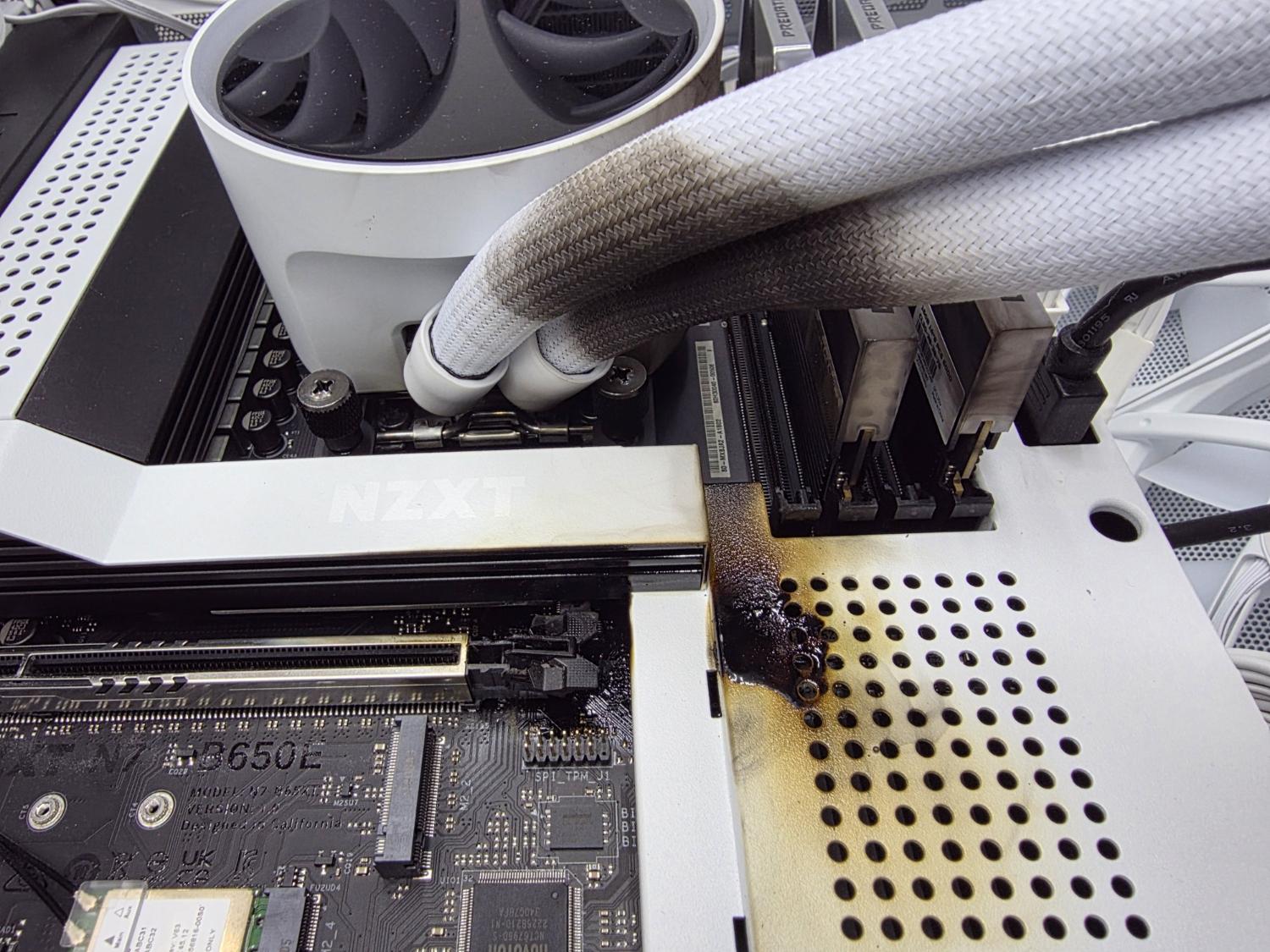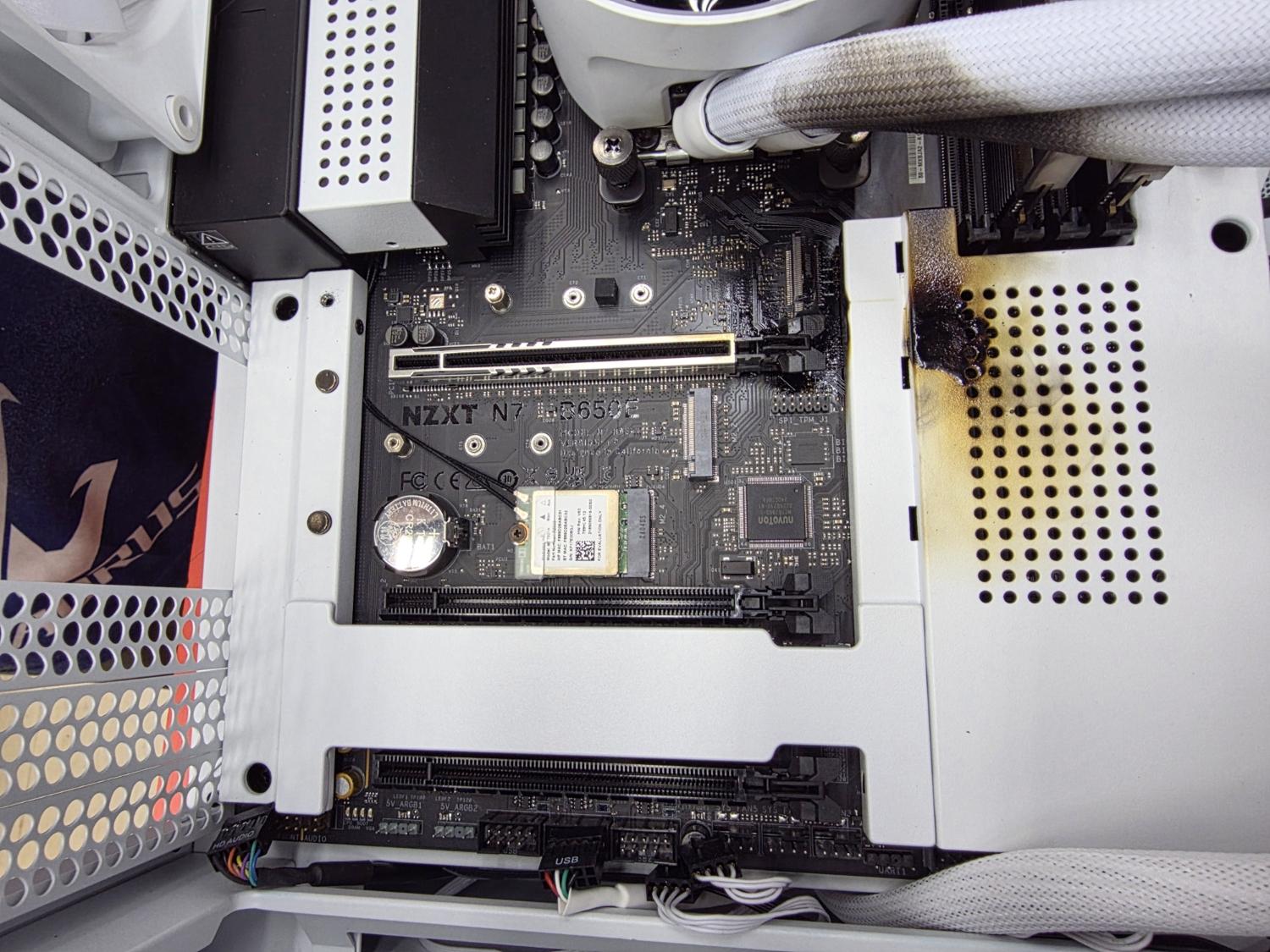Zotac RTX 5090 reportedly ignites while playing Battlefield 6 — undervolted card damages SSD, motherboard, and cooler, too
Performance-per-ember?

Nvidia's RTX 5090 received glowing reviews at launch because of its explosive performance, with many citing its FPS-crunching numbers as what young people would call "fire."
Unfortunately, to extract that kind of performance, the card pushes a lot of power through a connector notorious for its tendency to melt. We've just seen the latest case of a 5090 reportedly catching on fire, and it did burn, but this time the situation is a bit different than what you might think.
A Taiwanese Gamer.com.tw forum thread, first spotted by UNIKO’s Hardware, tells us the tale of a Zotac RTX 5090 AMP Extreme that allegedly caught fire mid-game during a Battlefield 6 session. The original poster, york4517, says the machine was a store-bought NZXT prebuilt. While playing Battlefield's open beta, the screen suddenly froze, a flash and burning smell appeared, and that's when the user noticed a flame inside the PC. The fire, coming from the GPU, lasted roughly ten seconds and left the 5090 heavily charred. The motherboard and SSD were also damaged, and even the liquid-cooling tubing smoked black.
a bf6 player forgot to attach the flash hider. the 5090 literally caught fire, the mobo took it badly as well.just kidding,user 紐約客 on forum gamer tw said his 5090 zotac amp extreme caught fire during bf6. the gpu pcb was burnt severely. the user said he did undervolt the… pic.twitter.com/VKQzhc8bYAAugust 11, 2025
The photos attached in the forum post show concentrated scorching around the lower edge of the PCB where the card meets the motherboard. Uniko pins the origin of the fire to the MSVDD rail—the memory-subsystem power line—and suspects a MOSFET short or phase failure in that area likely caused the burn, noting that section had no dedicated cooling. The pattern in the photos suggests a rapid, localized power-delivery failure that arced and burned through traces and nearby components, so the card appears to be a total loss.
The RTX 5090 is no stranger to failures, and this just adds to a long list, including an Asus ROG Astral 5090 with a suspected capacitor or VRM-phase blowout that scarred both card and board while leaving the 12V connector intact, and multiple reports of 16-pin / 12VHPWR connectors melting or showing severe heat damage despite seemingly being properly seated. This time, though, we cannot entirely rule out user error, as the card was confirmed to be undervolted first. But that's nothing extraordinary and certainly doesn't set the stage for the GPU to burn up.



It's no wonder that after such a catastrophic failure, warranty and RMA concerns were front-and-center in the OP’s thread. Since the machine was a prebuilt, york4517 said that the shop is coordinating with the distributor and Zotac’s local agent to inspect the unit, and multiple commenters chimed in with their opinions, worrying whether the shop will replace the whole system, offer a refurbished machine, or push repair fees onto customers. The SSD, which also received damage, is being handled separately.
Moreover, users in the thread also said that the card’s default voltages spike aggressively—reaching up to 1.1V under heavy load and hovering around 1.03V even during light use—pushing the hardware beyond stable limits. Nvidia’s removal of current load balancing circuitry seems to further destabilize power distribution, causing uneven current flow that worsens overheating and could lead to hardware failures.
Get Tom's Hardware's best news and in-depth reviews, straight to your inbox.
At the time of the forum post, there was no public statement from Zotac addressing this specific case. The pattern across social media and online forums —VRM/connector damage, connector melting, extreme localized cable and trace temperatures, and catastrophic single-component failures— suggests power delivery is the common failure domain for these high-wattage 5090 examples, but that's something with seemingly no permanent fix.
Follow Tom's Hardware on Google News to get our up-to-date news, analysis, and reviews in your feeds. Make sure to click the Follow button.

Hassam Nasir is a die-hard hardware enthusiast with years of experience as a tech editor and writer, focusing on detailed CPU comparisons and general hardware news. When he’s not working, you’ll find him bending tubes for his ever-evolving custom water-loop gaming rig or benchmarking the latest CPUs and GPUs just for fun.
-
chaz_music With all that collateral damage, I would be suspecting that the 12V on the GPU getting fed into the 5V or lower voltage rails. And there are no fuses. Hmm.Reply
It is interesting that the GPUs don't have to go through UL/ETL testing with that much power usage. And I wonder if UL would have caught the paralleled power pin fiasco? That is such a junior engineering error to make, I would expect they they would catch it.
EDIT: I just realized after reviewing this, that this is probably the result of the 12V Returns to the PSU burning and going to high resistance. I don't have that style of PSU available to check, but I would expect all of the PSU grounds to be tied together (12V, 5V, 3.3V, etc.) just like the older ATX PSUs do. This common grounding will also end up being connected to the motherboard ground planes. In my reasoning below, I am assuming that the GPU 12V bulk power returns are also connected to the GPU ground planes that go over to the PCIe connector. In essence, the entire PC PSU configuration has massive ground loops, but now with a high power/current system. Yikes.
In the connector failure scenario with the 12V returns slowly burning up, those returns will slowly go to higher resistance. But since the 12V Returns are also connected inside the PSU and to the motherboard ATX connector, the GPU return power flow will now find a path through the PCIe connector and through the motherboard grounds to the ATX connector. This failure mode relies on the 12V bulk power Returns connector pins to start failing. The connector pins on the 12V side won't cause this.
The GPU should detect this and shut off if bulk current starts to flow through the motherboard PCIe returns. And shunt resistors don't help this. The only other alternative is to use isolation in the power path (isolated 12V PSU feed or isolated GPU PSUs) to open the ground loops. This will effect all variants of this connector scheme: 12VHPWR, 12V-2x6 (H++), and the new 48VDC version 48VHPWR (see Wikipedia PCIe article). Anything that uses a common grounding point in the PSU feeding the entire PC. -
King_V I love that the opening lines were almost sounding like the aggressive branding that Patriot used for SSDs and USB sticks like Burst, Scorch, Supersonic Rage, etc.Reply
Patriot, fortunately, wasn't being literal. -
Notton I remember Zotac having issues with transient spikes in the past with RTX 20 and 30 series because of cheaper power delivery designs, but usually that resulted in crashes, and not combustion.Reply -
YSCCC Reply
Sorry, that's more $3000, not $1000 my dear ;)TechieTwo said:What should consumer's expect for $1000 ? /s The fun only gonna last so long. :( -
93QSD5 GPUs and CPUs burning for multiple generations.Reply
Manufacturers truly don't give a flying f. -
YSCCC Reply
TBF, ppl still defend their brand on internet more than their own dignity, and willing to pay extra $1000 scalper price on them, why would the evil manufacturers care..93QSD5 said:GPUs and CPUs burning for multiple generations.
Manufacturers truly don't give a flying f.